28 July to 13 August 2010
OK, once again playing a bit of catch up but we need to fill in the gaps, so this may end up being a mostly pictorial blog; no, not a cop-out as a picture tells a thousand words! ……
After a few days in Beijing refuelling on decent food and energy, we boarded the train for another epic journey – this time to Lhasa; the highest and longest railway in the world reaching altitudes of 5,000 metres (they pump oxygen into the carriages to help with any breathing difficulties), 4,000 km long and taking 45 hours. It was another comfortable train although not as good as the Mongolian one. As you tend not to move about too much whilst on a train it was difficult to tell whether or not the oxygen was necessary or helpful but neither of us felt any effects of the altitude.
The first stop on our Tibet itinerary was Lhasa. I had heard many people warn that “Tibet’s just not that Tibetan these days” and whilst it’s certainly true that there is a high military presence keeping a close watch on all activity, arguably in a fairly intrusive way, the streets of Old Lhasa and around the Potala Palace are thronging with Tibetans in their traditional dress, many wielding prayer wheels. Our hotel was right next to the part of the old town known as The Jokhang so it was really easy for us to explore the traditional back streets and eat in local restaurants. As I mentioned, the police are out in force but they seemed more interesting in making sure we didn’t take any pictures of them rather than what the Tibetans were doing. At one point, one officer looked through all our photos as he thought we had taken his picture – err, no mate, the traditional Tibetans are much more photogenic than you!
There are many places and temples important to Tibetans in and around Lhasa and we needed the four nights we had there to explore them all. One thing that is clear as a result of the Chinese occupation is that although there are still a lot of monks in the temples, this number is still thousands less than it was before the Chinese shut them all down. And when you look at it like that, the impact on tradition and culture has been massive. One of the gompas, or monasteries, Sera, is famous for its debating monks; a long-held tradition. It’s difficult to explain the process but it involves the monk putting the “for” case standing, stating his point and clapping in the faces of the sitting monks who are then required to respond. If this doesn’t make sense I took a video which I am also posting (the first time I’ve posted a video so hopefully, it will work!).
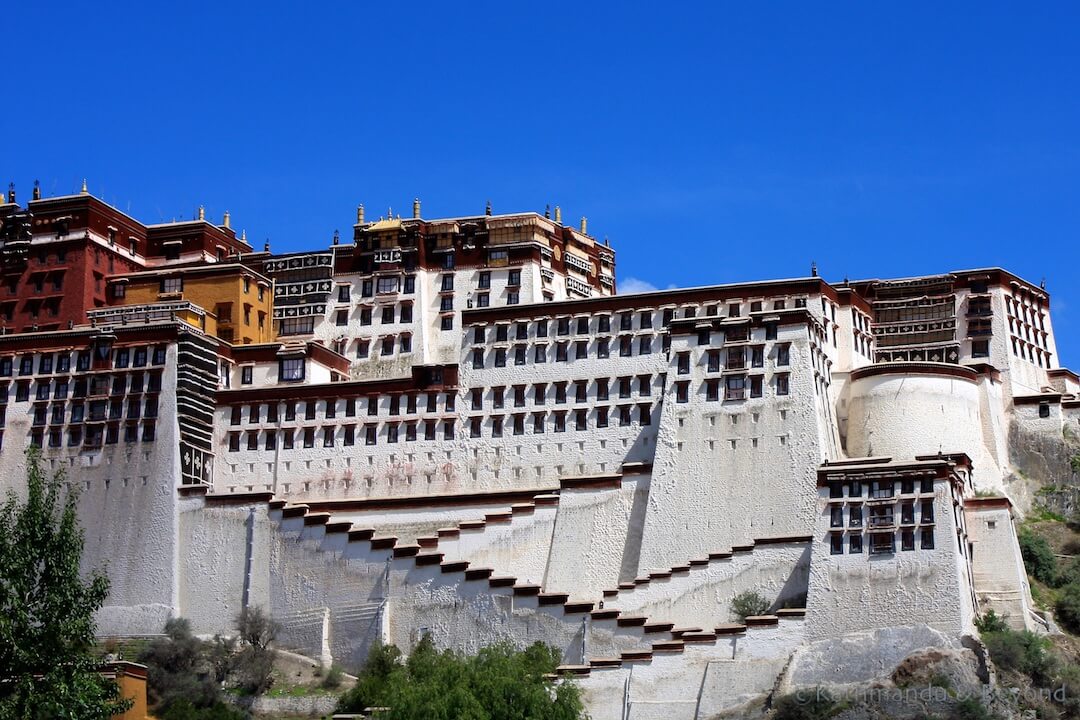
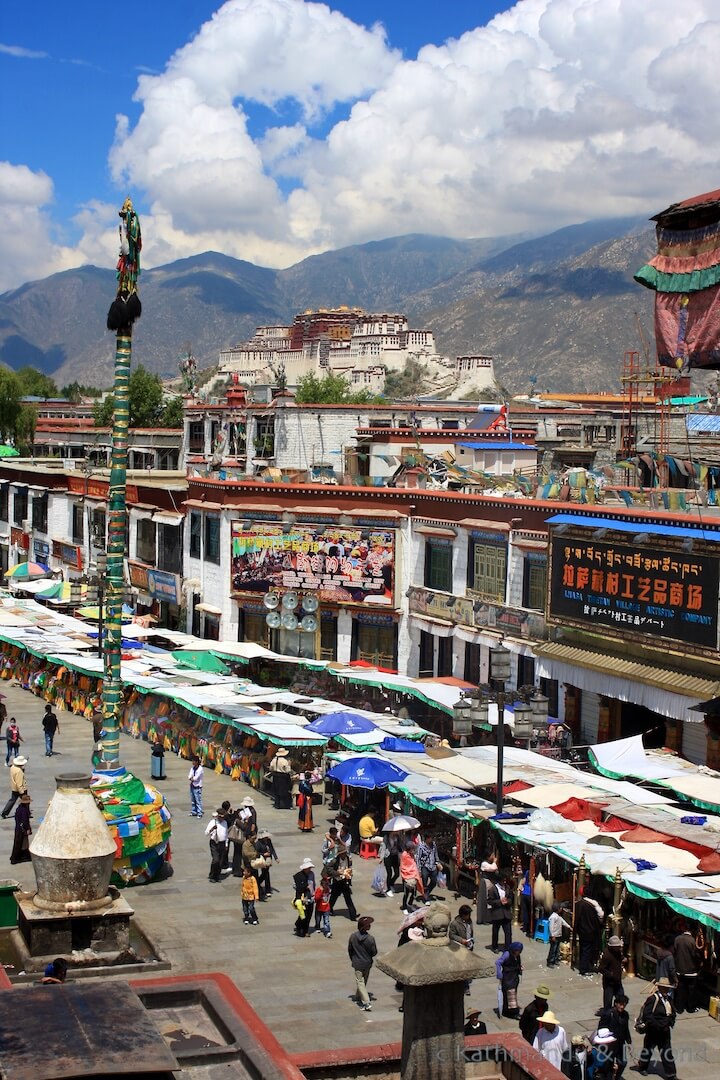
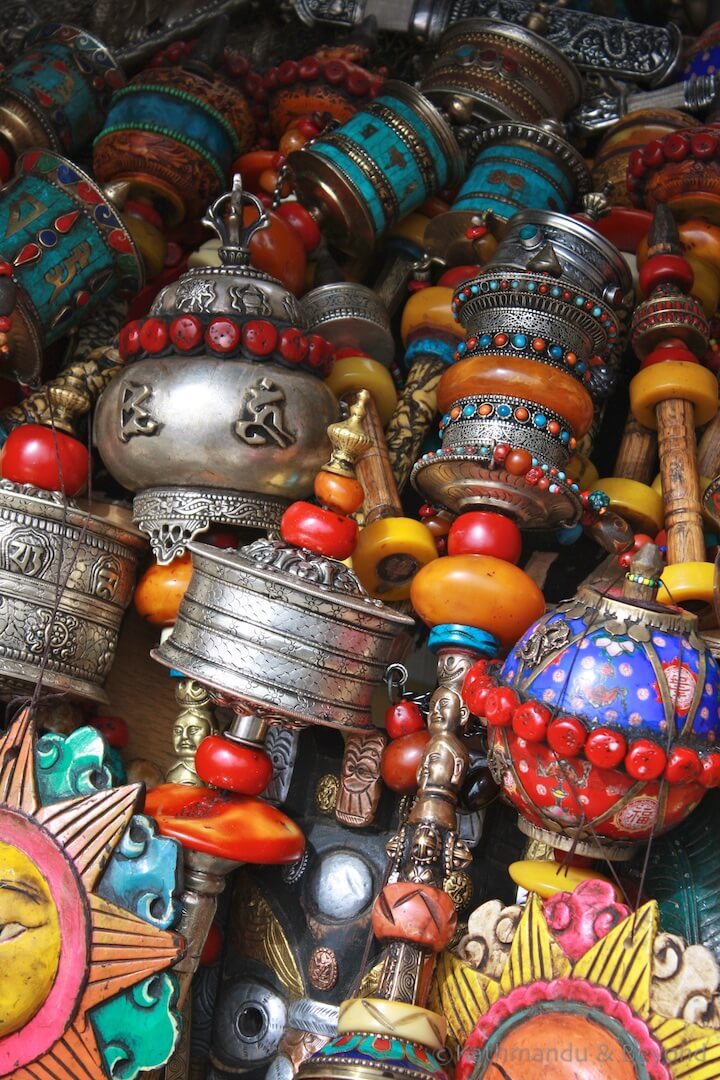
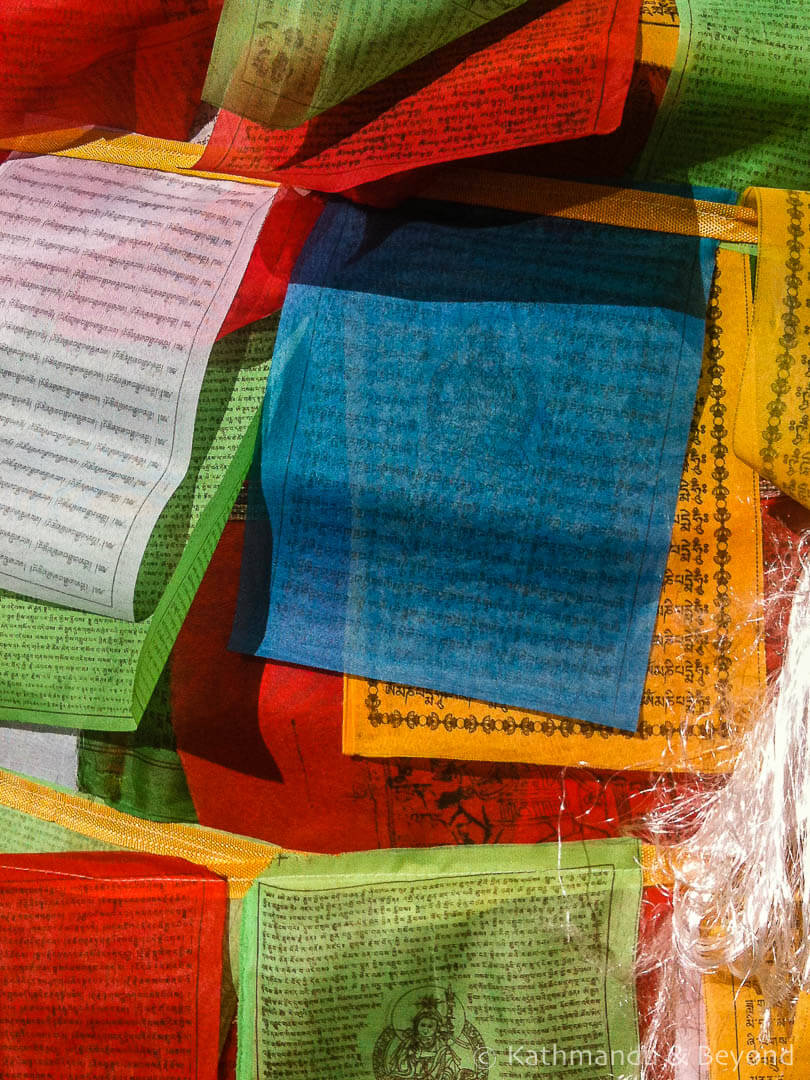
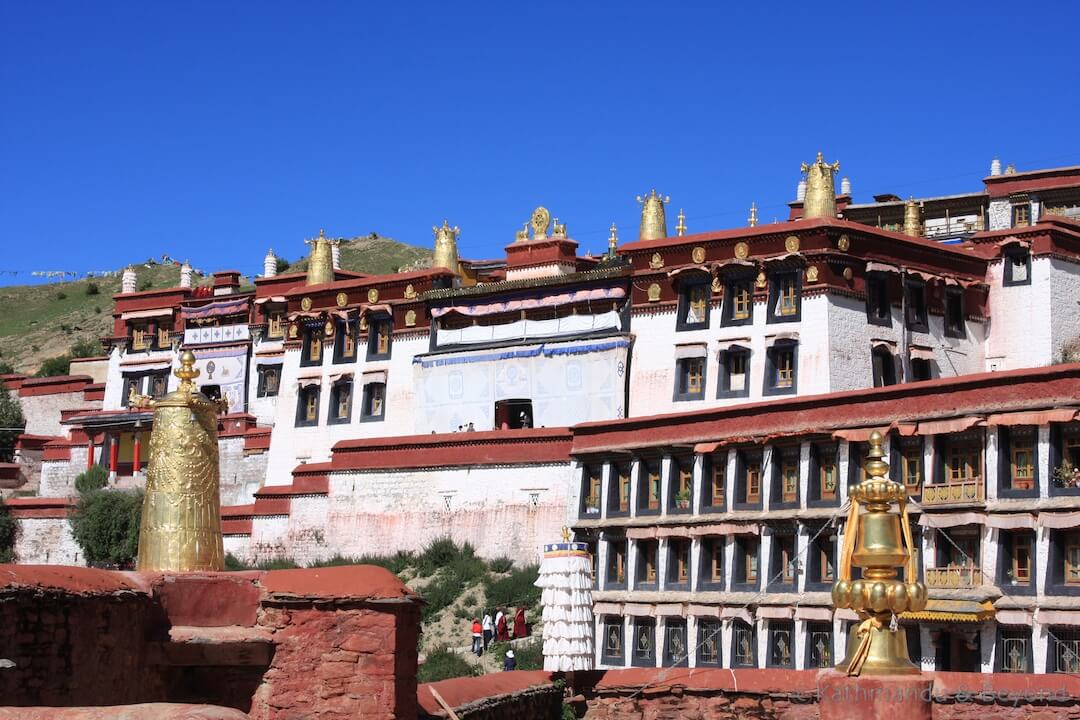
From Lhasa, we travelled to the towns of Gyantse and Shigatse which also have important gompas and although they were interesting, they did feel much more Chinese-ified than Lhasa. From Shigatse, we hit the road for the “main event”, holy Mount Kailash, but to get there we had to travel 850 or so kilometres on rough, or more accurately, non-existent roads. By this time next year there will be a fully paved, smooth road but currently, this road is being built with around 10% complete so far. This meant for most of the time we were driving alongside the road through rocks, rivers and road-building camps. Once out of the main tourist triangle of Lhasa, Gyantse and Shigatse, along with the roads, the standard of accommodation and choice of food also declined and we were generally staying in simple guesthouses with outside toilets and no showers/water for washing. But a bit like in Mongolia, luckily every couple of days we were able to find a local bathhouse so we could have a hot shower. The scenery along the way was spectacular; alternating between vast moonscape, snowy peaks, green meadows and even sand dunes. Having had clear blue skies up until now, we were concerned that the weather seemed to have taken a turn for the worse with grey skies, low cloud and even a bit of rain – not the ideal trekking conditions or, more importantly, viewing conditions for Mount Kailash. The long-held ambition for Mark to undertake this trek looked slightly under jeopardy.
Kailash is a sacred mountain for Buddhists, Hindus, Bons, and Jains – Hindus believe that Shiva lives on the top of the mountain and Buddhists that Kailash is the home of Buddha. A circuit of the mountain gives great merit and the more circuits the better. Many believe there is added merit in completing it in one day. That may be so, but I was happy to tackle it in the three days allotted.
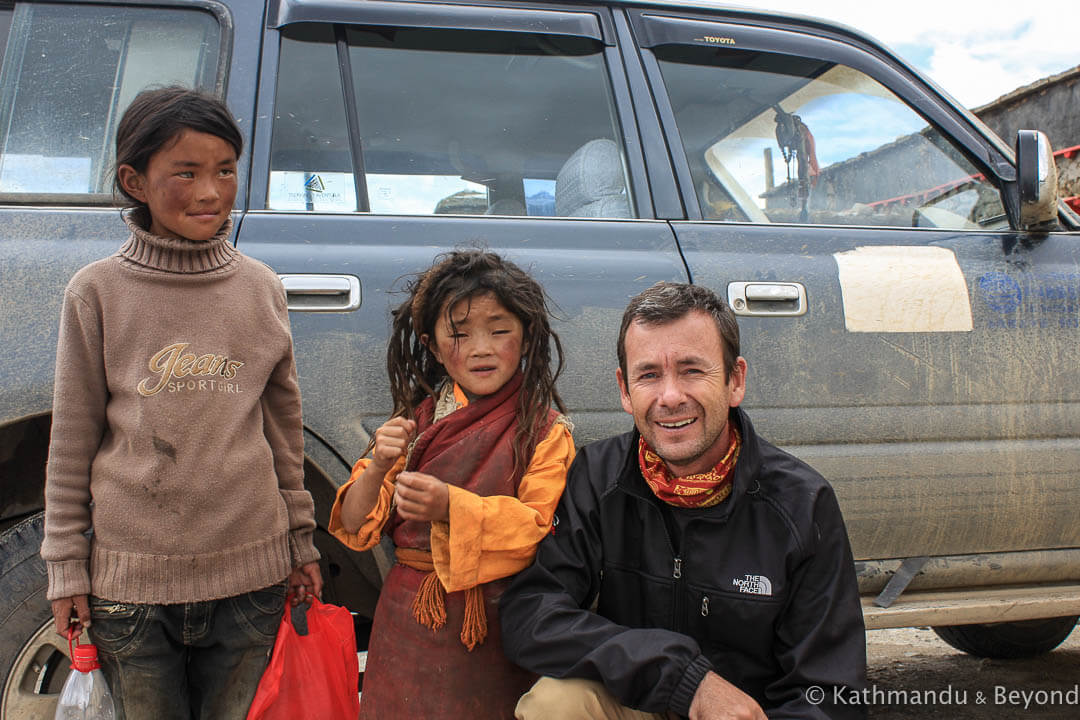
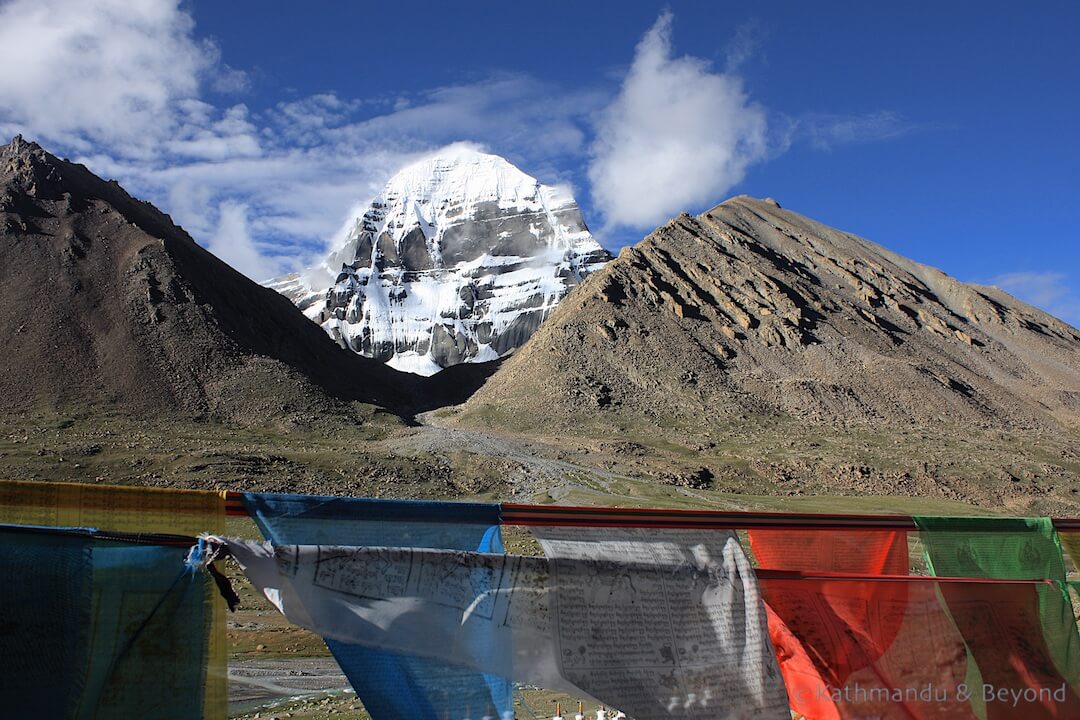
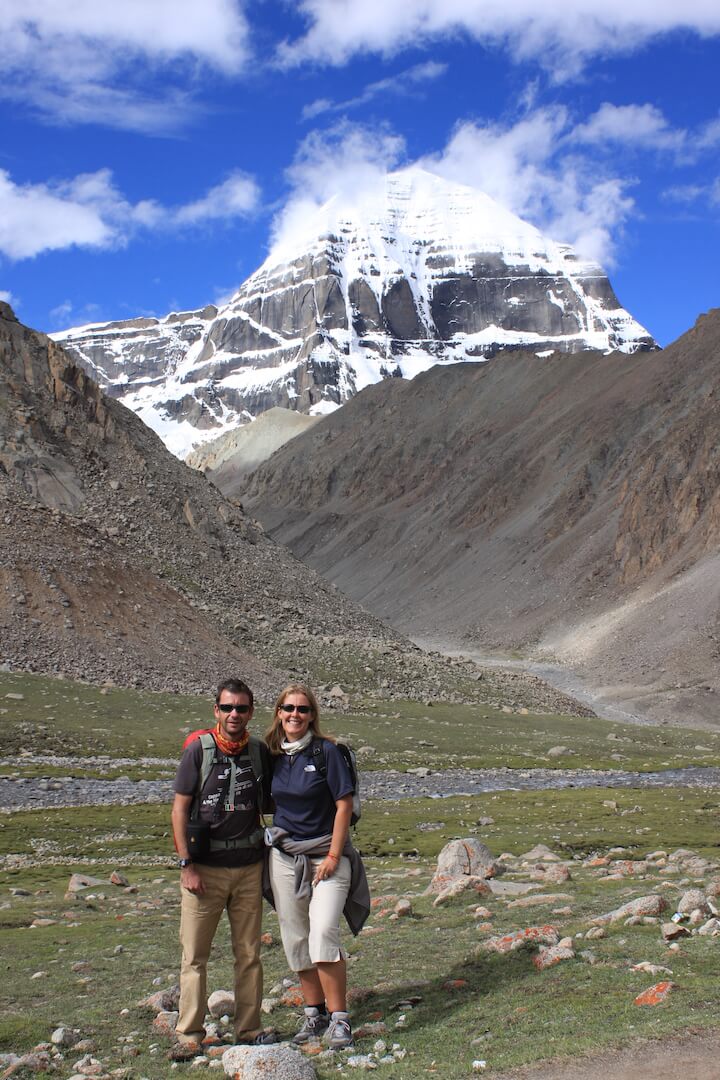
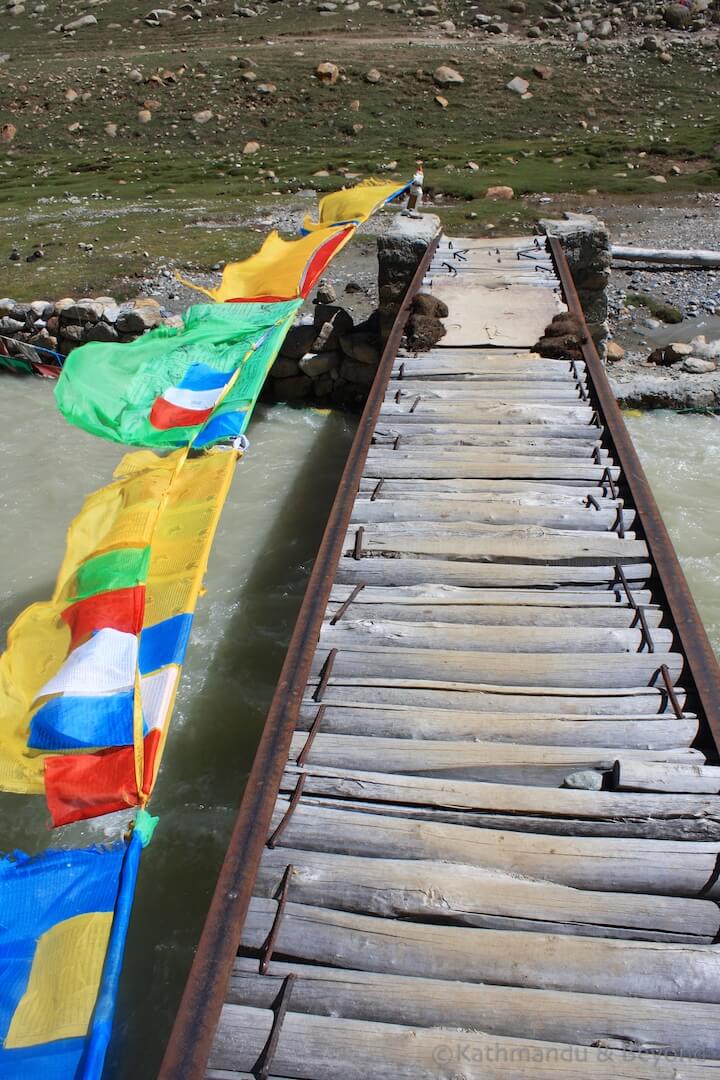
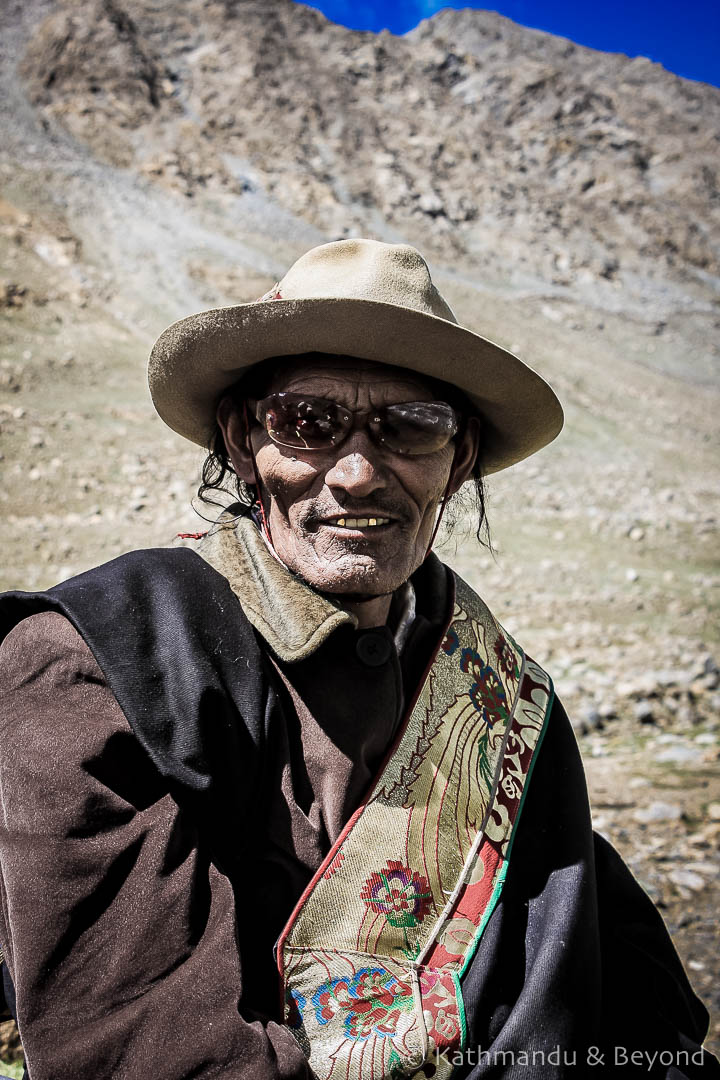
Just before the town of Darchen, which is the “base camp” for starting the Kailash trek, is Lake Manasarova, another holy spot. Although now dry, this area had obviously had heavy rainfall as much of the ground was flooded as well as many of the tents which served as accommodation whilst staying at the lake. Luckily, we managed to find a tent on dry ground but as we were getting closer to Kailash, we were not feeling optimistic. We had come such a long way; we couldn’t turn back so we agreed to go on to Darchen where we made our preparations to start the trek the following morning. We met a group of French walkers who had just completed the trek – they reported tough conditions which included rain, sun, and snow all in the same day. So, it was in the lap of the gods…
The following morning, we awoke to a clear sky so it was either my prayers or Mark’s threats that did the job. I like to think it was the former, of course. So off we set feeling slightly more optimistic and me slightly apprehensive about the challenge ahead. The first day was pretty straightforward and the weather held up well for us; we walked for around 7 hours, mostly on a steady uphill gradient. We arrived at the rest house where we were to spend the first night, which was spectacularly located at the foot of a Buddhist monastery with views ahead to Mount Kailash itself. That first evening we were teased with partially clouded views but when I woke up at 6.30 the following morning and crossed the cold yard to the “toilet”, the mountain was completely clear. Tibet is stupidly on Chinese time; for its geographical location it should be on Nepal/India time and there the sun doesn’t really rise until around 8am. We decided to delay our departure that morning until around 10am in order to wait until the sun had fully risen on the mountain; we were fully rewarded and the views were stunning.
Day 2 was by far the hardest day of the trek involving an ascent to a pass a little short of 5,700 metres, which was the highest either of us had ever been. A couple of weeks in Tibet must have provided good acclimatisation as apart from feeling rather breathless on the steep uphill section, neither of us felt any detrimental effects from the altitude. Because of the altitude and steepness, it was a slow ascent to the pass but nothing too bad and finally we made it. Well, finally I made it – Mark would have been a bit quicker than me had he been left to his own devices!
As is often the case on high passes, it was pretty chilly so after a few photos, some re-fuelling and a quick laying of our prayer flags it was time for the off again. The rest of the day was long – very long. We walked for 10 hours and by the time we reached the place where we were to spend the night, I was exhausted: too tired to properly appreciate what we’d done, I think.
The final day was a very easy 2 hours which for a speedier walker could be achieved on Day 2 but would be pushing it for most normal people. Even though we’d only been walking for three days, it was good to get back to Darchen for a hot shower in the local bathhouse and some decent food that wasn’t instant noodles. By the last couple of meals on the trek I was so sick of instant noodles (remember we had already had our fill in China and Mongolia), I chose to skip meals rather than force one down. I don’t think I could face another one just yet either.
The journey from Darchen to Kathmandu partially re-traced our tyre treads and gave us the opportunity to glimpse further snow-peaked mountains as well as say goodbye to the instant noodles and dodgy accommodation. It was good to be back in Kathmandu albeit it a shock to the system to be back in the smoggy hustle and bustle after the quiet and vast open spaces of Tibet. We had a great few days though catching up with friends, visiting our favourite bars and restaurants and enjoying a few hot showers. A well-deserved “holiday” following the hardships of China, Mongolia and Tibet!
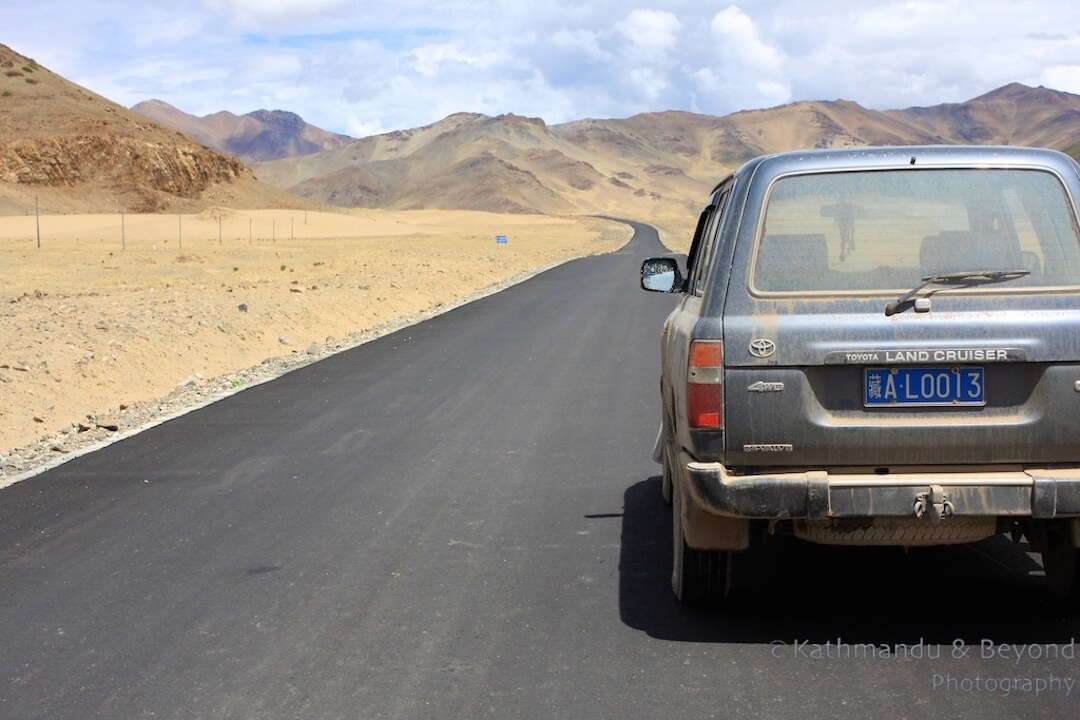
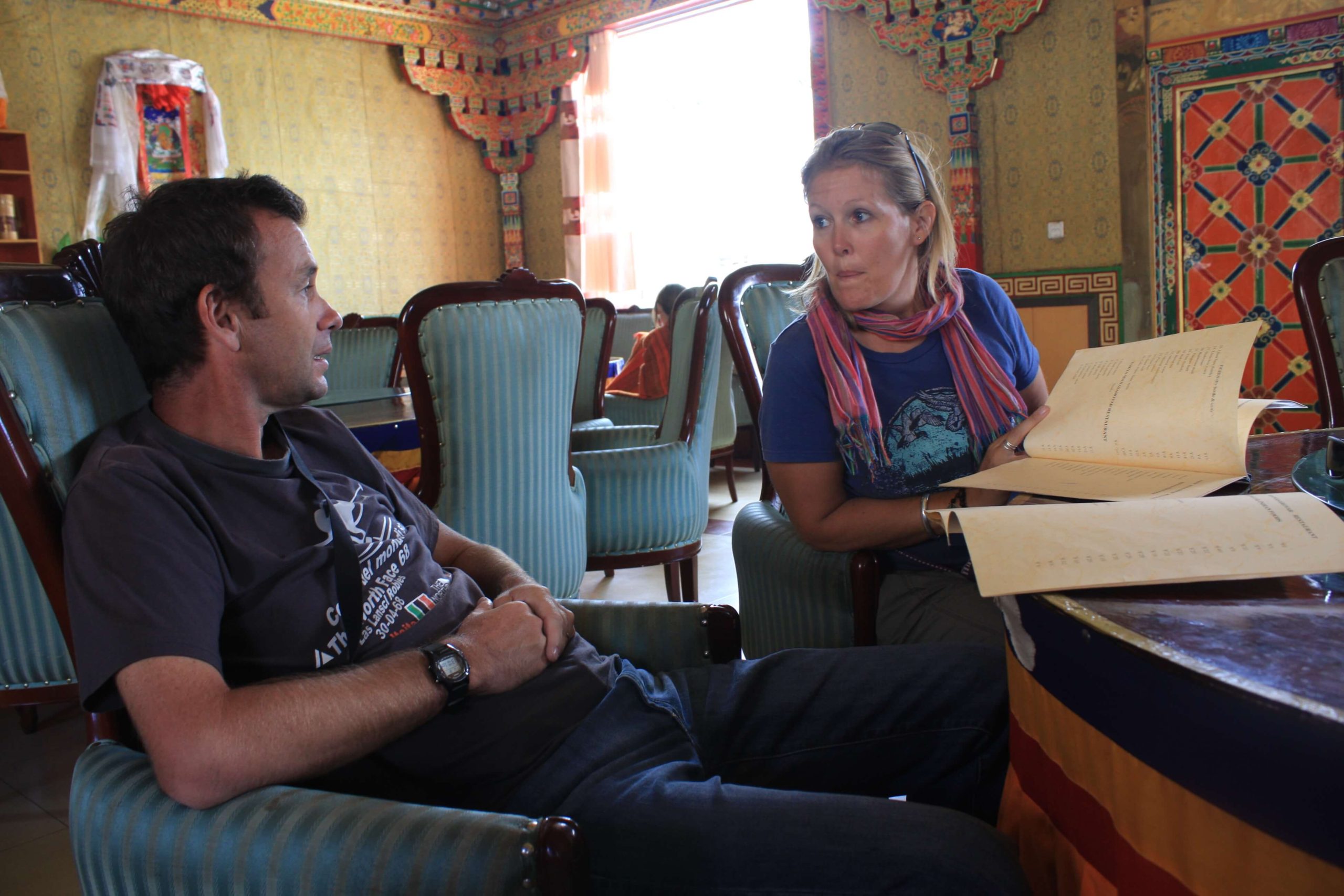
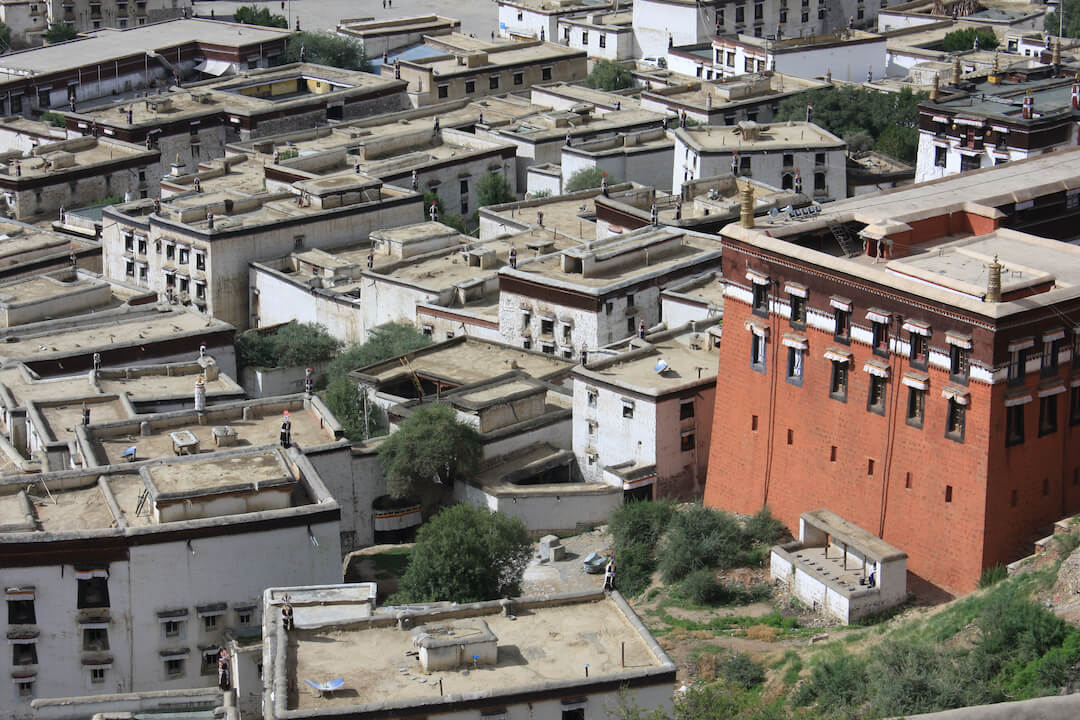
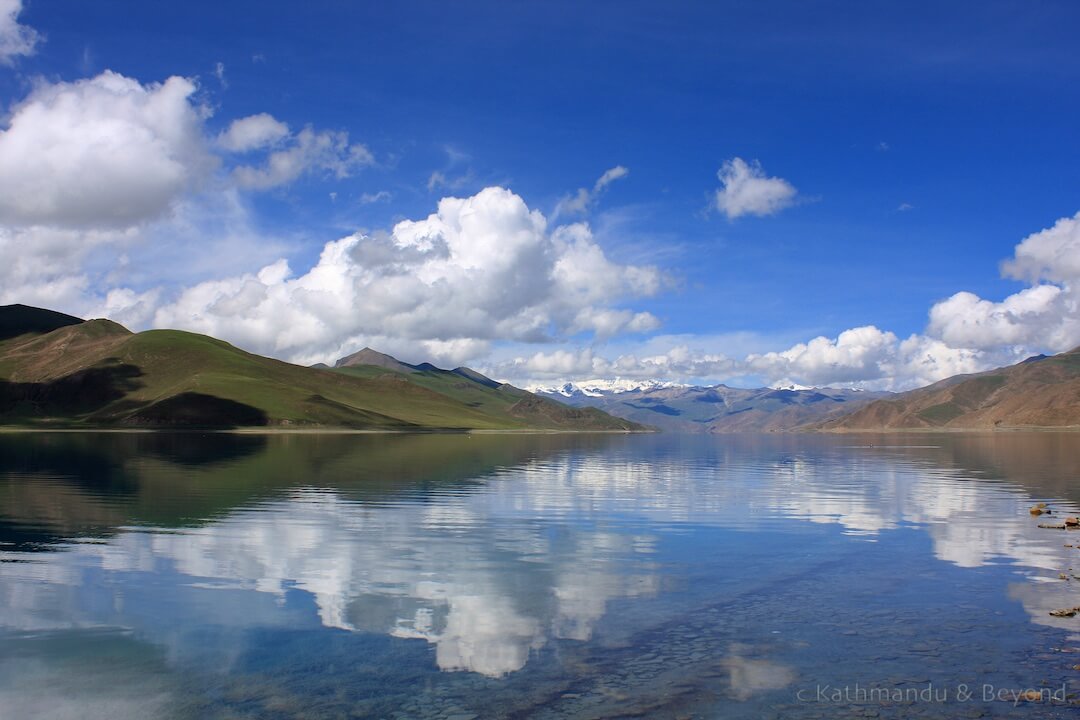
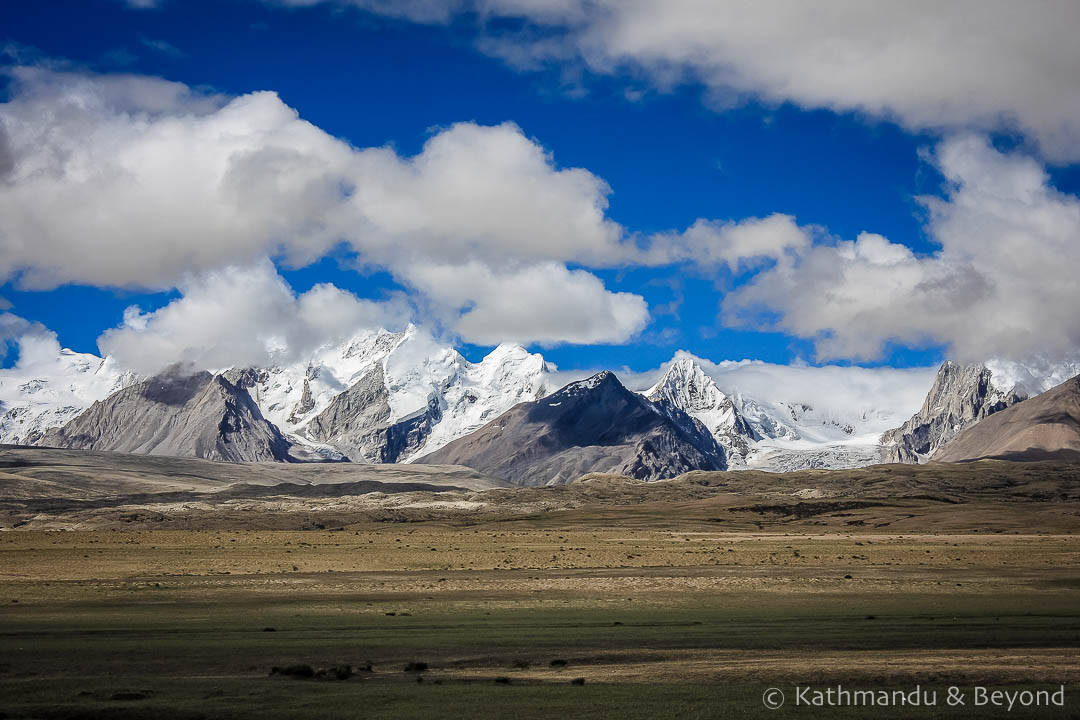

Trackbacks/Pingbacks